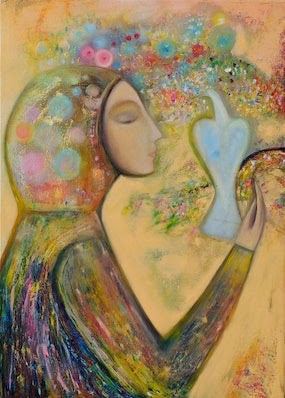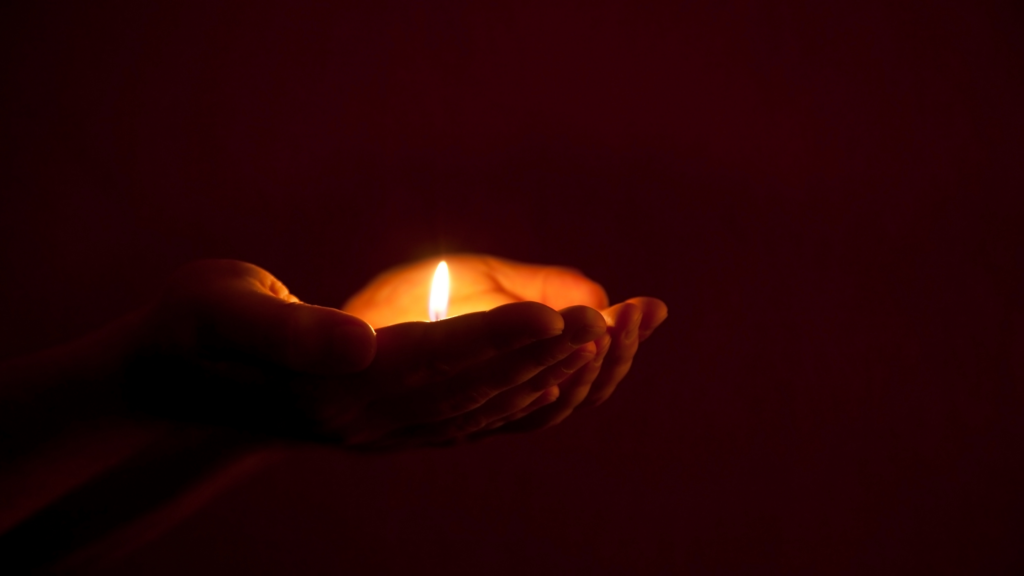There is much happening in the world at the moment that causes consternation and overwhelm and often deep sadness. We see so much now on our screens, we can identify with people caught in the most horrific of circumstances and we can very quickly become overwhelmed or angry or bitter about the state of the world and our seeming incapacity to effect positive change.
We learned a lot during the recent Covid pandemic about the importance of keeping ourselves informed and about being informed by trustworthy sources. It helps us to feel more in control of our situation and reduces overwhelm. That advice is also sound advice during times of international turmoil caused by war.
To that end, I’m sharing two sources of information that I personally found helpful in recent weeks. First is this Ted interview with Yuval Noah Harari (historian and author of ‘Sapiens’ and ‘Homo Deus’) about the situation in the Ukraine. It’s about an hour long but for me at least it was worth every minute.
And if you would prefer some written content, that’s much shorter to digest I offer these links to articles by Andrew Cottey in the Irish Examiner and the Echolive respectively. Full disclosure: Andrew is my husband and has been studying and writing about East Central Europe since I first met him as a grad student in Peace Studies in Bradford in the 1990s. For those of you living in Ireland you’ll also regularly hear him speak on this conflict and related topics on Irish radio.
You’ll be identifying a theme here already in today’s blog – it’s up to us, to each of us individually, to be informed and to choose and manage our responses. And that can be a tall order! So I wanted to take some time with this blog to share with you some ideas that can sustain us at this time. All the suggestions here help us to reconnect with our best selves, to ask, what would love do here and respond to whatever is going on in our lives with love. It is only then, I believe, that we will really be making a contribution and will really be effecting positive change.
So buckle up, this is a slightly longer blog than usual that I trust will serve you as we once again see unprecedent events unfold in our time.
I am drawing on sources from multiple spiritual and faith traditions in this blog and I hope that it contributes to our insight that we are all essentially the same and are being guided on the same path, no matter what background we may have been raised in.
The first insight I want to share is to help us understand that it all starts with us, individually. To create peace in a time of war, it starts with creating peace in ourselves. Some time ago I participated on a course with the wonderful Peter Harper aka The Drunken Monk on Zen koans.
To give you the heads up first, the Huffington Post explains koans as follows:
“Koans may seem like paradoxes at first glance. It is up to the Zen student to tease out their meaning. Often, after a prolonged and exhausting intellectual struggle, the student realizes that the koan is actually meant to be understood by the spirit and by intuition.”
The koan I share here now is The Empty Boat:

The Empty Boat
A monk decided to meditate alone, away from his monastery.
He took his boat out to the middle of the lake, moored it there, closed his eyes and began meditating.
After a few hours of undisturbed silence, he suddenly felt the bump of another boat colliding with his own.
With his eyes still closed, he felt his anger rising, and by the time he opened his eyes, he was ready to scream at the boatman who had so carelessly disturbed his meditation.
But when he opened his eyes, he was surprised to find that it was an empty boat that had struck his own.
It had probably become untethered and floated to the middle of the lake.At that moment, the monk had a great realization.
He understood that the anger was within him; it merely needed the bump of an external object to provoke it out of him.
From then on, whenever he came across someone who irritated him or provoked him to anger, he would remind himself, that the other person was merely an empty boat, the anger was within him.
I love this story because it helps me to remember that what I am thinking and feeling is not in reaction to what is happening around me. Those thoughts and feelings are in me already. And I have dominion over what’s in me, I get to choose my thoughts and feelings and my response. Even when I feel anger or overwhelm or bitterness, I can still choose to dial that down and to respond with kindness and love. I believe that is what we are always being called to do.
The Dalai Lama puts it this way:
This is my simple religion. There is no need for temples; no need for complicated philosophy. Our own brain, our own heart is our temple; the philosophy is kindness.”
So what can we do to respond with kindness at a time of war? One way is to use this Loving Kindness practice to support our self-compassion first and then to bring love and compassion to all others. We can’t give what we don’t have, so it must start with ourselves. We generate compassion for ourselves, for the darkness that’s within as well as the light, compassion for getting overwhelmed, for feeling anger. We fill ourselves up with loving kindness and then we extend that to others.
You can use the words here or adapt them with words that feel right for you. Either which way, you use the same wording to send loving kindness to all.
First, you think loving kindness towards yourself:
May I be filled with loving kindness, May I be well, May I be peaceful and at ease, May I be happy
Then, you extend loving kindness towards others. Ultimately, we want to extend it to the people we find most difficult to love, but we can build up our spiritual muscle to be better able to do that. Typically, the practice is to now think toward another, someone you know and find easy to be loving towards and extend loving kindness to them:
May you be filled with loving kindness, May you be well, May you be peaceful and at easy, May you be happy
Then, think toward another, a neutral person. Someone you’ve seen in the news or read about, you don’t know them but you wish them well. Use the words above to extend loving kindness to them.
Then think about someone with whom you’ve had some difficulty. Now, repeat the meditation toward this person, in the same way you said it toward the one you love.
And finally, bring to your mind someone whom you find very challenging to love and extend loving kindness to them, using the same words again:
May you be filled with loving kindness, May you be well, May you be peaceful and at ease, May you be happy
Sometimes it is very challenging to extend loving kindness towards that last person in the sequence in particular, although it may be challenging at any stage in the process. To help us with that, A Course in Miracles, says something very interesting:
“Every action is either an expression of love, or a call for love, regardless of how unskillful it may seem.”
The invitation here is to separate the being that we find so challenging to love from the behaviour itself. Our practice is to learn to see past the person who is doing the behaviour into the essence of who they are. This is the same practice both for ourselves and others.
Each one of us is an infinite spiritual being having a human experience. And everyone is doing the best they can from their current level of awareness. Think about the power of having dominion over how we are perceiving others and being able to separate their beingness from their behaviours. If we are able to see every act – regardless of how unskillful it may appear – as some aspect of love, that very view generates compassion and allows us to respond with love.
I know for many at a time of war this may seem just naive. In response, all I can do is offer these words from Theillard de Chardin:
“Someday, after mastering the winds, the waves, the tides and gravity, we shall harness for God the energies of love, and then, for a second time in the history of the world, man will have discovered fire.”
Finally, I want to offer a tool that is a bit more active. For some of us, especially when we are distressed or angry, we want to be able to do something. So staying with the intention to respond with love, I want to share what I believe is a beautiful, loving Irish tradition of lighting a candle for someone.
Often this is something that people would do in a church, to light a candle for someone’s intentions, for recovery from illness, for success in love or business or in exams. And often times we do it in our homes. My Mum, for example, has a statue of Mary and lights candles there. We all believe in the power of her prayer and often ask her to ‘light a candle for me’ in times of challenge.
Similarly, I have a space in my office where I set down my intentions and routinely light a candle for clients or friends and now, for people in the Ukraine and Russia, sending love and light to guide their path.
More recently, I came across the beautiful Quaker practice of holding people in the light. When you hold someone in the light you picture them in your mind and imagine that they are surrounded by a warm, glowing, healing light. You can think of this as the light of God, or the light of love, or the light of hope and good wishes.
I invite you to see this practice as a way in which you can be of service to others at this time. Let’s look at what that might look like to put into action.
Take the opportunity during your day to expand your awareness and bring it to others in your circle of care and connection who are suffering. What is the suffering that is happening in my family, for other people in my friendship circle and in my larger community? What is the suffering that is happening internationally, not just in the Ukraine or Russia, but in all areas that are war torn? Hold those individuals or groups in the light as you picture them in your mind and imagine that they are surrounded by a warm, glowing, healing light.
As you expand your awareness around the circle, bathing them in light, you can expand your awareness to what are their most important needs? Quakers are practical people and, as it was explained to me, would be inclined to attend to needs after careful consideration of how to best do this and if it is appropriate.
What needs for emotional support do my family and friends and community have? What needs for support do others in my awareness need? What practical support can I offer?
Where could you take some time to provide emotional support? It might be encouragement, it might be a phone call where you’re giving people emotional support to help them get through the day right now. If it is the war in particular that you are holding in your awareness, perhaps there are people in your local community who have family and friends in the conflict areas – could you offer emotional support to them?
What about practical support or financial support? In the context of the war in the Ukraine, can you put together provisions or donate financially to aid agencies or charities that are able to provide the kind of support on the ground that resonates with you as a way to make a difference. You may also have people in your local circle of care and connection. What would practical support look like for them? Maybe you could share a school run, cook a meal, donate to local causes?
And, here’s the thing. You might not be able to give everything that the world needs, but you’re going to start to feel like you are a presence in this world who is making a difference when you are responding to the suffering of others with service, with care, and giving what you can with love.
So let’s bring this one in to land: take a moment right now to make a list of the service that you can commit to for the next week. And if it would help you to feel accountable, feel free to share your list of services with me or another.
When there is such huge turmoil in the world, we think we can’t make a difference, but you absolutely can make a difference. And you’re going to start to feel your own grief or anger lift and yourself expand as you do your own inner work and then let your attention expand to be with others, as a presence who is meeting suffering with service, with empathy, with courage, and with love.
I’ll finish with Thich Nhat Hahn’s words. He says much more succinctly than I have here what it takes to create transformation:
“To be a buddha—to wake up—also means to wake up to the suffering in the world and find ways to bring relief and transformation. This requires a tremendous source of energy. Your strong aspiration—your mind of love—is that immense source of energy that helps wake you up to the nourishing and healing beauties of nature and to the suffering of the world. It gives you a lot of energy to help. This is the career of a buddha. And if you have that source of strength in you, if you have the mind of love, you are a buddha in action.”
― Thich Nhat Hanh, The Art of Living
PS – I want to acknowledge that it can be so much easier to implement these kinds of practices when in community. I mentioned Peter Harper above as the teacher who brought me to Zen koans. Peter is doing an amazing job currently to offer a daily opportunity for Peace & Grounding, approximately 30 minutes of guided meditation to help you to release anxiety, find the grounding and to send love and peace to the Ukraine with the intention to end the war. You can join in live via Instagram: @the.drunken.monk or you can watch all recordings on Peter’s Youtube channel: https://youtube.com/c/ThedrunkenmonkUk or his website: https://the-drunkenmonk.com/
PPS – a colleague, Marcy Nelson-Garrisson shared some information today about Oleysa Hudyma an amazing artist in Ukraine. This is Oleysa’s work: Angel of Peace.

Oleysa and her children have left their home and fled to the western part of Ukraine. She had to leave behind her home and her studio, years of paintings and all her materials. She prays that she will be able to return. When Marcy asked what would help they came up with the idea to make Oleysa’s painting available as a downloadable print. In the spirit of International Women’s Day, I’m sharing the link here to purchase a print of Oleysa’s Angel of Peace. All the proceeds go to the artist.
One suggestion is that you could put your print in a window as a show of support for Ukraine. I am doing that with mine and I invite you to do the same.

